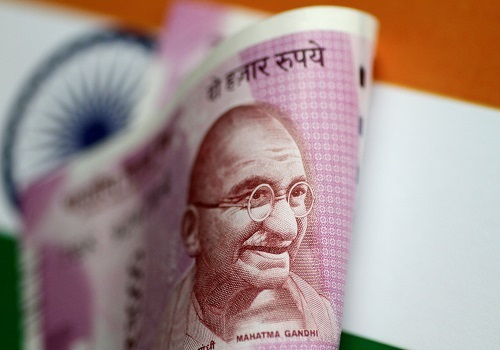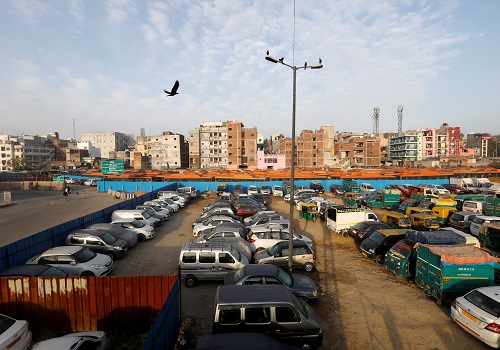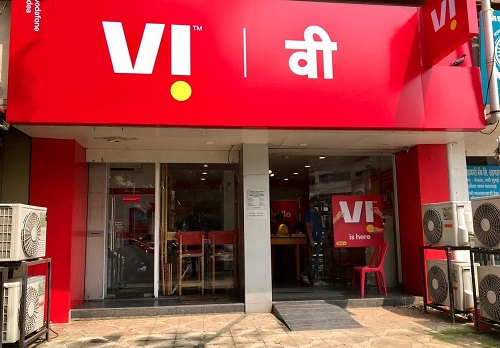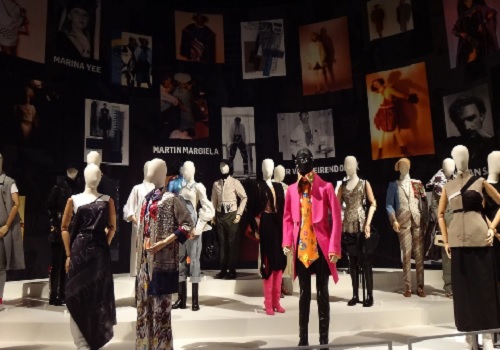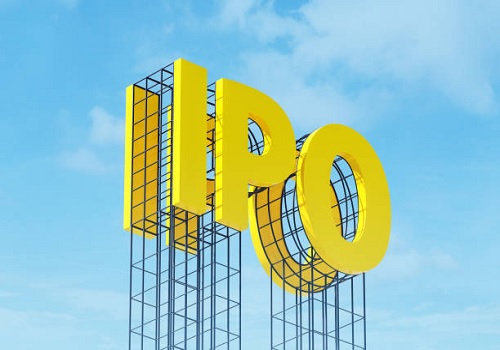Go Fashion coming with an IPO to raise upto Rs 1020 crore

Follow us Now on Telegram ! Get daily 10 - 12 important updates on Business, Finance and Investment. Join our Telegram Channel
Go Fashion (India)
-
Go Fashion (India), the women's bottom-wear products maker under Go Colors brand, is coming out with a 100% book building; initial public offering (IPO) of 1,47,86,785 shares of Rs 10 each in a price band Rs 655-690 per equity share.
-
Not less than 75% of the issue will be allocated to Qualified Institutional Buyers (QIBs), including 5% to the mutual funds. Further, not more than 15% of the issue will be available for the non-institutional bidders and the remaining 10% for the retail investors.
-
The issue will open for subscription on November 17, 2021 and will close on November 22, 2021.
-
The shares will be listed on BSE as well as NSE.
-
The face value of the share is Rs 10 and is priced 65.50 times of its face value on the lower side and 69 times on the higher side.
-
Book running lead manager to the issue are JM Financial, DAM Capital Advisors and ICICI Securities.
-
Compliance Officer for the issue is Gayathri Venkatesan.
Profile of the company
The company is a women’s bottom-wear brand in India, with a market share of approximately 8% in the branded women’s bottom-wear market in Fiscal 2020. It is engaged in the development, design, sourcing, marketing and retailing a range of women’s bottom-wear products under the brand, ‘Go Colors’. It is among the few apparel companies in India to have identified the market opportunity in women’s bottom-wear and has acted as a ‘category creator’ for bottom-wear. It was the first company to launch a brand exclusively dedicated to women’s bottom-wear category and have leveraged this advantage to create a direct-to-consumer brand with a diversified and differentiated product portfolio of premium quality products at competitive prices.
The company offered one of the widest portfolios of bottom-wear products among women’s apparel retailers in India in terms of colours and styles, as of July 2021. Its bottom-wear products, which include churidars, leggings, dhotis, harem pants, patiala, palazzos, culottes, pants, trousers and jeggings, are sold across multiple categories such as ethnic wear, western wear, fusion wear, athleisure, denims, plus sizes and girls wear making its portfolio ‘universal’ and for every occasion. As of September 30, 2021, it sold bottom-wear in over 50 styles in more than 120 colours. It designs its products to cater to women across all age groups and girls and fits that are suitable to various body types and physiques. These factors, coupled with the lack of seasonality, ensure that its portfolio is resistant to redundancy from fashion trends.
Proceed is being used for:
-
Funding roll out of 120 new EBOs.
-
Funding working capital requirements.
-
General corporate purposes.
Industry overview
Retail Market in India was valued at $796 billion (Rs 5,970,000 crore) in Fiscal 2020 and is expected to grow at a CAGR of 6.23% to reach $1,077 billion (Rs 8,077,500 crore) by Fiscal 2025. In Fiscal 2020, India’s retail basket was approximately 48.5% of its private consumption and it is expected to maintain roughly this share in private consumption for the next five years. The food and grocery (F&G) segment forms the major share of India’s merchandise retail expenditure (approximately 66%), it has jumped to approximately 73% amid the disruptions caused by COVID-19 in Fiscal 2021. While other sectors in retail have contracted by 25% to 30% during Fiscal 21 due to the impact of COVID-19, need based categories like food and grocery and pharma retail have witnessed growth.
Apparel market size in Fiscal 2020 was Rs 447,666 crore ($59.69 billion) and expected to grow at a CAGR of approximately 8.95% between Fiscal 2020 and Fiscal 2025 to reach Rs 687,263 crore ($91.64 billion) by Fiscal 2025 on the back of factors like higher brand consciousness, increasing digitization, greater purchasing power and increasing urbanization. While the apparel market has degrown by approximately 32% to reach a value of Rs 3,06,225 ($40.83 billion) in Fiscal 2021 due to negative impact of COVID-19 pandemic, the market is expected to recover at a higher pace of 22.4% between Fiscal 2022 and Fiscal 2025. Women’s apparel market can be broadly divided into super premium, premium, medium and mass price segments. The medium price segment holds majority of the share among apparel segment by holding 29% followed by economy which holds 28% of the share of the apparel market of the country. The price sensitive rural population forms a major chunk of 54%, the of the low and economy price segments of apparel market.
Pros and strengths
Well-diversified product portfolio: The company’s product portfolio includes churidars, leggings, dhotis, harems, patiala, palazzo, culottes, pants, trousers and jeggings across multiple categories including ethnic wear, fusion wear, western wear, lounge wear, athleisure, Go Plus and girl’s wear. It is among the few women’s apparel retailers that offer bottom-wear products across all categories, including ethnic, western wear, fusion and denims and have one of the largest bottom-wear product offerings in women’s apparel. Its diverse product portfolio caters to women across all age groups and girls and physiques covering the entire spectrum of women’s bottom-wear requirements, including daily wear, casual and work wear, festive and occasion wear and loungewear. It offers customers the ability to ‘mix and match’ their top-wear with an assortment of bottom-wear styles in multiple colours allowing them to plan an outfit according to their needs. It offers customers premium quality products at a price range that caters across all income segments, which allows it to tap customers in tier II and tier III cities as well.
Multi-channel pan-India distribution network with focus on EBOs: The company has a multi-channel retail presence across India. Its extensive network of stores allows it to cater to women across India, and ensures effective penetration of the products it retail. It retails its products directly to consumers primarily through its network of EBOs (Exclusive Brand Outlets) and as of September 30, 2021, it operated 459 EBOs across 118 cities in 23 states and union territories across India. Further, as of September 30, 2021, it also retailed its products through 1,270 LFSs, such as Reliance Retail, Central, Unlimited, Globus Stores and Spencer's Retail among others, across 499 cities spanning the entire country covering 31 states and union territories. It also sells its products through online marketplaces and through its own website. Its EBOs are situated in locations that have significant footfalls such as high street locations, shopping malls, markets in residential areas and airports. Its expansion model has also facilitated ease of inter-store stock movements allowing it flexibility of maximising benefits from capitalising on supply chain efficiencies.
Strong unit economics with efficient operating model: The company has a standardized and scalable development model for its EBOs based on its know-how and experience. In determining its store roll-outs it assess optimum store size and layout and lease arrangements that are typically long-term in nature and/or revenue share arrangements. Its ability to identify and determine the optimum location and size of a store as well as manage rental costs and the marketing leverage of its EBOs are critical to ensuring visibility among target customers and sustainability of store profitability, resulting in the company having one of the highest sales per square feet among key women’s apparel companies and in particular among EBOs in India in Fiscal 2021. The company’s unit economics has allowed it to expand its EBO network across various regions in India including new EBOs in tier I/II / III / IV cities and towns resulting in frequency of store openings, being one every 12 days over the last three Fiscals. It opened 305 new stores in the EBO format and more than 400 new stores in the LFS format in the last three Fiscals across 507 tier I/ II / III / IV cities in India while it opened two new stores in the EBO format and more than 86 new stores in the LFS format in the three months ended June 30, 2021, across 499 tier I/ II / III / IV cities in India.
Extensive procurement base with highly efficient and technology-driven supply chain management: The company offers customers premium quality products at affordable prices and in Fiscal 2021, more than 88.32% of its products were retailed at a price lower than Rs 1,049. It has been able to achieve its value proposition to customers through low procurement and operating costs. It outsources the manufacture of its products and thereby do not incur manufacturing costs. It has been able to build and manage an extensive sourcing network to support its product development teams. It works closely with its suppliers and also supervises their manufacturing operations through its personnel and conduct inspections that enable it to perform quality checks. Its sourcing team closely monitors its suppliers and provides strict quality assurance analysis that allows it to consistently maintain its quality for its customers. It follows stringent norms of quality assurance at various levels through quality control mechanisms and regularly conducts inspections of fabrics sourced from its suppliers. It also tracks its suppliers’ capacity and output to ensure that its production requirements are met and it is able to procure finished products in a timely manner.
Risks and concerns
Depends on sales through large format stores, multi-brand outlets, franchisees, and online retailers: The company relies on third parties such as LFSs, franchisees, distributors for MBOs and online retailers, for a significant portion of its sales and revenues. Sales of products through LFSs, franchisees, MBOs and online retailers, represented 22.00%, 1.31%, 2.86% and 4.76%, respectively, of its total revenue from operations in Fiscal 2021, and represented 13.44%, 0.84%, 1.25% and 6.45% of its total revenue from operations in the three months ended June 30, 2021, respectively. It enters into agreements with LFSs, franchisees, and online retailers to sell its products. Counterparties under these agreements typically have the right to terminate agreements without cause. While there have been no termination of agreements in Fiscal 2019 and 2020, and in the three months ended June 30, 2021, in Fiscal 2021, one of the LFS terminated their arrangement with it to retail its products at their stores. The arrangement was terminated as the LFS intended to expand on its own brand portfolio.
Rapidly changing customer preferences: The company is a women’s branded bottom-wear company and its business is characterized by rapidly changing customer preferences. Its results of operations are dependent on its ability to anticipate, gauge and respond to such changes in customer preferences and design new products or modify its existing products in line with changes in fashion trends as well as customer demands and preferences. It is difficult to predict consistently and successfully the consumption patterns of the customers. If it is unable to do so, it may lose, or fail to attract customers, its inventory may become obsolete and it may be subject to pricing pressure to sell its inventory at a discount. A decline in demand for its products or an error in judgment on its part could lead to lower sales, excess inventories and higher markdowns, each of which may have an adverse effect on its results of operations and financial condition.
Depends on maintaining high standards of customer service in stores: The company’s business is manpower intensive and the success of its business depends on maintaining high standards of customer service in its stores. This is dependent on its ability to attract, hire, train, and retain skilled personnel particularly for design and sales functions, monitor them continuously on key service parameters and guide them regularly. It had 2,855 employees as of September 30, 2021, including 10 employees in its design team, and 2,517 employees who are front-end staff at its EBOs and LFSs. It relies on its design team comprising of skilled designers and craftsmen both for textile and fabric design as well as for clothes styling. Further, in the retail industry, the level and quality of sales personnel and customer service are key competitive factors. As it seeks to offer new products and designs and expand its retail network, it needs experienced manpower that has relevant knowledge of its target customers and of the local market and the retail industry to operate its stores, respectively.
Depends on third-party transportation providers: As an apparel manufacturing business, the company’s success depends on the uninterrupted supply and transportation of the various raw materials required in the manufacture of its products and of its products from manufacturing facilities to its customers, or intermediate delivery points such as its warehouse and stores, that are subject to various uncertainties and risks. It transports its raw materials and its finished products by road. It relies on its suppliers, third party logistic companies and freight forwarders to deliver its raw materials and finished products. It enters into contractual relationships with such logistic companies which are not typically per consignment, but are of a fixed duration of two to three years. In addition, raw materials and products may be lost or damaged in transit for various reasons including occurrence of accidents or natural disasters. There may also be delay in delivery of raw materials and products which may also affect its business and results of operation negatively.
Outlook
Incorporated in 2010, Go Fashion (India) is one of the largest women's bottom-wear brands in India. The company is engaged in the development, design, sourcing, marketing, and retailing of a range of women's bottom-wear products under the brand, 'Go Colors'. The company offers one of the widest portfolios of bottom-wear products among women's apparel retailers in terms of colors and styles. As of May 31, 2021, Go Colors sold bottom-wear in over 50 styles in more than 120 colors. Its in-house design and merchandising team designs and develops bottom-wear products across categories with their deep understanding of consumers’ requirements, in-depth market research and data analysis, helping in creating the fit and comfort of its products. It manages its inventory and logistics as well as its entire supply chain for all its channels from its 99,100 square foot warehouse in Tirupur, Tamil Nadu and are capable of handling complex SKU mixes. It is led by a management team that has extensive industry experience. On the concern side, the company’s warehouse is currently located in Southern India and any significant disruption, including due to social, political or economic factors or natural calamities or civil disruptions, impacting this region may adversely affect operations. Besides, the success of its business depends upon its ability to anticipate and forecast customer demand and trends. Any error in its forecast could result in either surplus stock, which it may be unable to sell in a timely manner, or at all, or under-stocking, which will affect its ability to meet customer demand.
The issue has been offered in a price band of Rs 655-690 per equity share. The aggregate size of the offer is around Rs 968.53 crore to Rs 1020.29 crore based on lower and upper price band respectively. On performance front, total income decreased by 28.87% from Rs 3,968.39 million in Fiscal 2020 to Rs 2,822.52 million in Fiscal 2021 primarily due to the impact of the COVID-19 crisis and the temporary closure of a number of its stores across India due to lockdown related restrictions on its business operations commencing from end of Fiscal 2020, as well as reduced store-level operations, including reduced operating hours in line with GoI guidelines, which resulted in a significant decrease in customer footfalls at its stores given the lockdown, and significant decrease in same-store sales up to the third quarter of Fiscal 2021. It recorded a loss after tax of Rs 35.39 million in Fiscal 2021 primarily on account of the impact of COVID-19 on its operations and on account of adoption of Ind AS 116 compared to a profit of Rs 526.34 million in Fiscal 2020.
The company intends to further improve its operating efficiency and ensure efficient supply chain management through global best practices. Among the measures that it intends to undertake include investing further in its IT infrastructure to improve productivity and time savings. It will look to expand and upgrade its warehouse to optimize its inventory and supply management. It intends to strategically expand its warehouse operations as well as implement new technologies to further expand and improve customer deliveries and enhance customer buying experience with faster dispatches. It intends to also undertake data analytics that will allow it to better understand customer preferences, improve sales and help scale its operations.


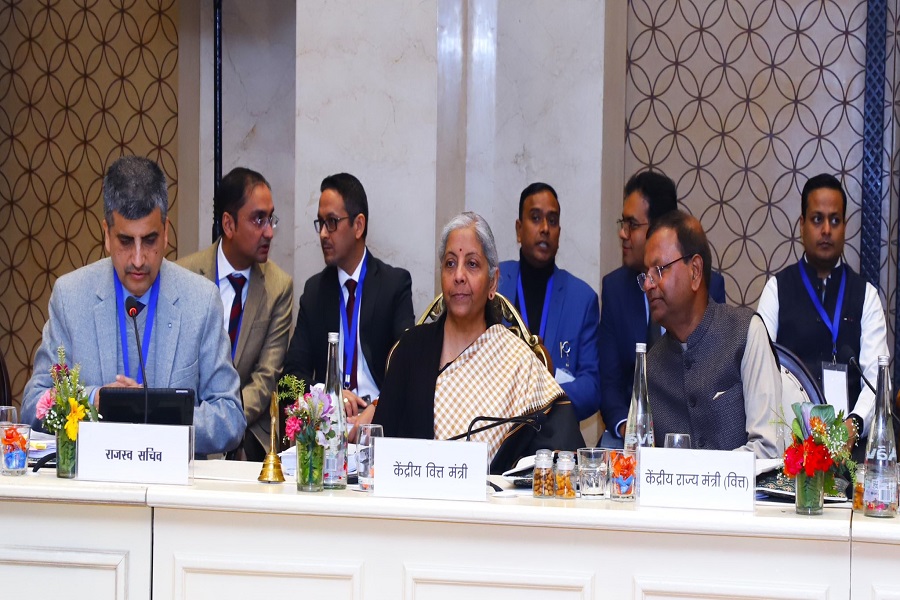


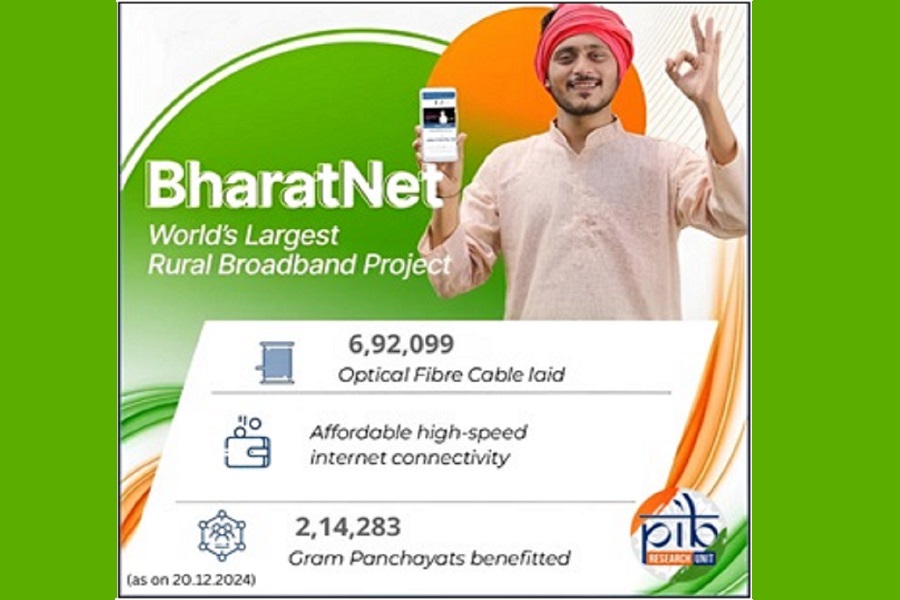
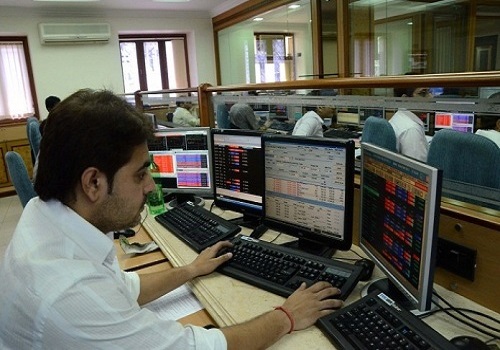
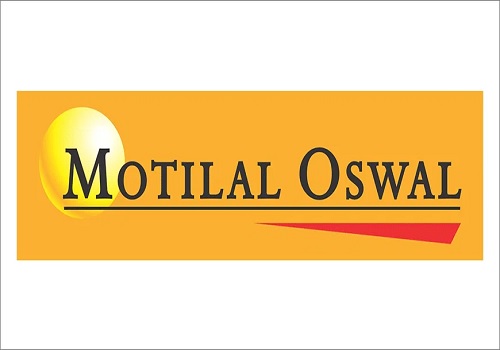




 320-x-100_uti_gold.jpg" alt="Advertisement">
320-x-100_uti_gold.jpg" alt="Advertisement">

